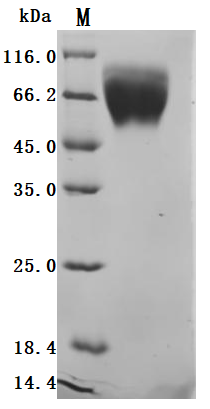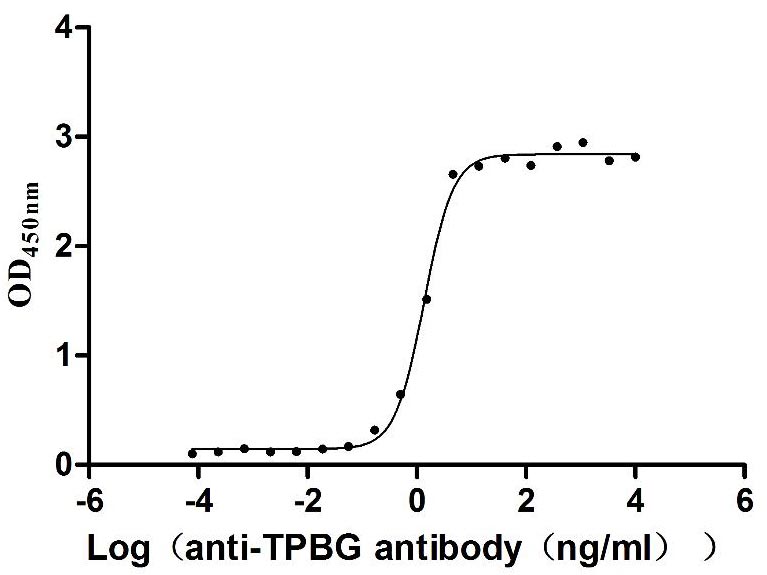This Human TPBG recombinant protein was produced in mammalian cell, where the gene sequence encoding Human TPBG (32-355aa) was expressed with the N-terminal 10xHis tag. The purity of this TPBG protein was greater than 95%. The activity was validated.
TPBG was first discovered in embryonic development. It is highly expressed in placental trophoblast cells and is basically absent in normal tissues. It only exists in some special epithelia, such as basal stratified squamous epithelium, glandular and ductal epithelium, and retina. Secondary neurons and olfactory bulbs. Later, it was found that TPBG is expressed in many cancers, including uterine cancer, ovarian cancer, colorectal cancer, gastric cancer, kidney cancer, prostate cancer and so on. In colon, gastric, or ovarian cancer, there is evidence that the expression of TPBG is associated with low cancer cure rates. In the tissues of non-small cell lung cancer, kidney cancer or pancreatic cancer, the expression of TPBG is as high as more than 95%. Overexpression of TPBG in tumors is associated with disease progression. It may play a role in affecting the connections between tumor cells, affecting cell morphology, motility and adhesion, and then promoting distant metastasis.





